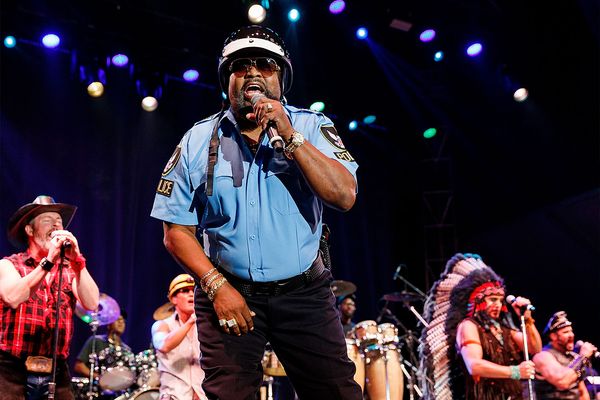
Last week, film-maker and GQ correspondent CJ Hunt was in the middle of the Charlottesville violence when he recorded something extraordinary. A young man ran into frame. Separated from his supremacist clan, lost amidst the leftists, in panic he whipped off his white polo shirt to stand semi-naked: “I’m not really white power, man,” he shouts. “I’m just doing it for fun.” The message was clear. White polo shirt on = white power. White polo shirt off = normal bloke.
At Charlottesville, many of the far-right turned up wearing a uniform of powder-white polo shirts, with jeans or chinos – an overall air of country club pomade was practically hanging in the air. Carrying their tiki torches they were attempting to cultivate an aesthetic that could appear non-threatening, even aspirational.
The cornerstone of the look was the white polo shirt, and nothing about that uniform was accidental. Before Charlottesville, Andrew Anglin, founder of the Daily Stormer (the American neo-Nazi and white supremacist website), issued an edict: “We need to be extremely conscious of what we look like, and how we present ourselves.”

“A must-have in each wardrobe” read the caption for a European Brotherhood polo shirt – available for €49 on the Daily Stormer’s website, before it went offline. Other logos were available, up to and including an Iron Cross.
Vanguard America, the organisation with which James Fields, the man accused of mowing down a crowd of anti-fascist protesters, was photographed, had already consciously adopted this polo shirt as its uniform. Fields didn’t belong to VA, but he was given one of its shields erroneously, simply because he was wearing a white polo shirt.

The relationship between the right and the polo shirt arguably began in the 1960s. The Mods were a working-class movement – rebelling against their origins by dressing sharper than their supposed betters. A sub-sect known as the Hard Mods emerged in 1966 – initially non-violent and non-political – and went on to adopt Fred Perry, polo shirt and all, as one of its labels of choice. In 1969, the Daily Mirror gave them a new name: skinheads. When some of these men began being violent towards Asians, newly arrived in the country, and hanging around the British National Front in the 1970s, the association stuck.
Polo shirts haven’t always been so politicised – their origins are a little hazy, with some attributing them to a polo club in Argentina in the late 19th century, where players found the traditional gear was too hot; others to British polo players in India in the 19th century. But it was French tennis player René Lacoste who made a name for the collared shirt when he wore one to play in the US Open in New York City in 1926. Bringing it to the US – complete with the crocodile logo his nickname inspired – in 1952 through La Chemise Lacoste, the company he set up on his retirement from tennis.

Ralph Lauren first took polo shirts out of the sports cupboard and on to America’s streets with his Polo label. Of course there is a huge irony in men in polo shirts chanting: “Jews will never replace us” – Lauren, born Ralph Lifschitz, was the son of Jewish Belarussian immigrants.
He cleverly exploited the polo’s aspirational connotations, its WASPy roots in sports such as tennis, polo, sailing, golf – the kind that require a few acres of land or an ocean-going vessel to play. The purity of his preppiness is entirely born out of a fantasy – Lauren’s own, fondest dream was to one day enter that Cape Cod bourgeoisie. The same sense of exclusivity has put the white polo at the heart of Donald Trump’s golfing lookbook.
By the late 80s, hip-hop was also falling for Lauren’s preppy shirts, for many of the same reasons the British white working class had originally embraced them. The relaxed aspirational quality. “It expressed you had money,” Raekwon told XXL Magazine in a multi-part oral history of Polo in hip-hop. “It’s like when you think of that horse on your shirt, that horse symbolises them cats out there playing polo.”
While the polo shirt as the go-to for cats on horses might now be old news, the idea of “good breeding” is still stitched deep into its fabric. It’s safe. It’s simple. It’s normal. That was the message that the Charlottesville mobs have taken from it. They were in the business of “normalising”, and while it might be bright white and well-ironed, it’s also a chilling bit of camouflage.







